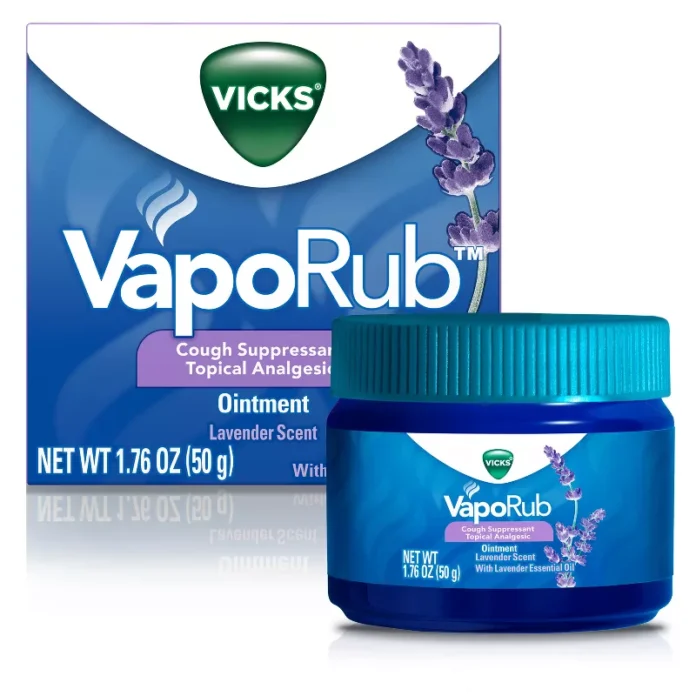Say goodbye to chemical sprays and hello to a natural pest-fighting hero hiding in your medicine cabinet—mentholated ointment (like Vicks VapoRub).
With a potent mix of menthol, camphor, eucalyptus oil, and cedar leaf oil, this fragrant balm isn’t just for colds—it’s surprisingly effective at keeping common household pests at bay.
Whether you’re battling ants, spiders, or even rodents, here are 13 clever, chemical-free ways to reclaim your space—plus safety tips and answers to frequently asked questions to keep everything clean, effective, and eco-conscious.
Why It Works
The strong scent of menthol, camphor, and essential oils overwhelms the senses of many pests, making your home far less inviting. Mentholated ointment is:
- Non-toxic when used properly
- Budget-friendly
- Aware of pets and kids (with care)
- Suitable for indoor and some outdoor uses
13 Natural Pest Control Uses for Mentholated Ointment
- Mosquitoes – Dab small amounts on exposed skin or place open jars near windows and beds. For added protection, combine with DIY mosquito traps.
- House Flies – Smear a bit on a cloth near sinks or trash bins, or dissolve a small amount in warm water and leave it uncovered in a bowl. Refresh weekly for continued effectiveness.
- Ants – Apply to cracks, baseboards, and areas near garbage. Reapply after cleaning or wiping surfaces.
- Spiders – Rub along baseboards, windowsills, or areas where webs appear. You can enhance results by pairing it with a citrus-based spray.
- Cockroaches – Apply behind appliances, under sinks, and around pantry corners. Be careful to avoid areas where food is directly stored.
- Mice and Rats – Soak cotton balls in the ointment and place them behind cabinets, in pantries, or near known entry points. Refresh weekly and seal any gaps or cracks.
- Gnats – Dab a bit on your skin and place small open containers near fruit bowls. Bonus: it can also help relieve bites.
- Bed Bugs – Apply along mattress seams and around bed frames. Maintain a regular cleaning routine to complement this method.
- Silverfish – Mix with warm water and spray in moist areas such as under sinks or around tubs. Proper ventilation also helps reduce infestation.
- Moths – Rub onto cotton balls and place inside drawers, storage bins, or closets. Replace the cotton every two weeks for best results.
- Beetles – Dab onto wall cracks, window edges, or baseboards where beetles tend to enter.
- Earwigs – Rub a bit on garden stakes or planter stems to keep earwigs from crawling into your plants. You can also combine with natural deterrents like crushed pistachio shells.
- Wasps – Apply a light layer under outdoor furniture, railings, or roof eaves. Never apply near an active nest.
Bonus Tip: Flea Prevention Indoors
Apply a small amount to the corners of your pet’s bedding or collar—never directly onto the pet’s skin. Clean pet areas often to enhance effectiveness.
Safety Guidelines
- Avoid direct contact with eyes, broken skin, or sensitive areas
- Keep out of reach of children, especially under the age of two
- Use cautiously around pets—consult your vet before applying near animals
- Test surfaces like fabric and wood before applying, as staining may occur
- Ensure good ventilation in enclosed spaces
- Always wash your hands after use
Tips for Best Results
- Clean affected areas before applying to eliminate food residue and pest trails
- Focus on common entry points such as doors, baseboards, and under sinks
- Combine with other natural solutions for broader protection
- Reapply weekly or after cleaning to maintain a strong scent barrier
- Use additional natural fragrance solutions to keep your home fresh while deterring pests
The Natural Hack You Didn’t Know You Needed
With just a jar of mentholated ointment, you can reduce pests in your home without resorting to harsh chemicals. It’s a simple, affordable, and surprisingly effective solution hiding in plain sight. Use it wisely, stay consistent, and you’ll enjoy a cleaner, calmer, pest-free space.
Need a printable version of this guide or have a natural pest remedy of your own? Let me know—I’d be happy to help.
